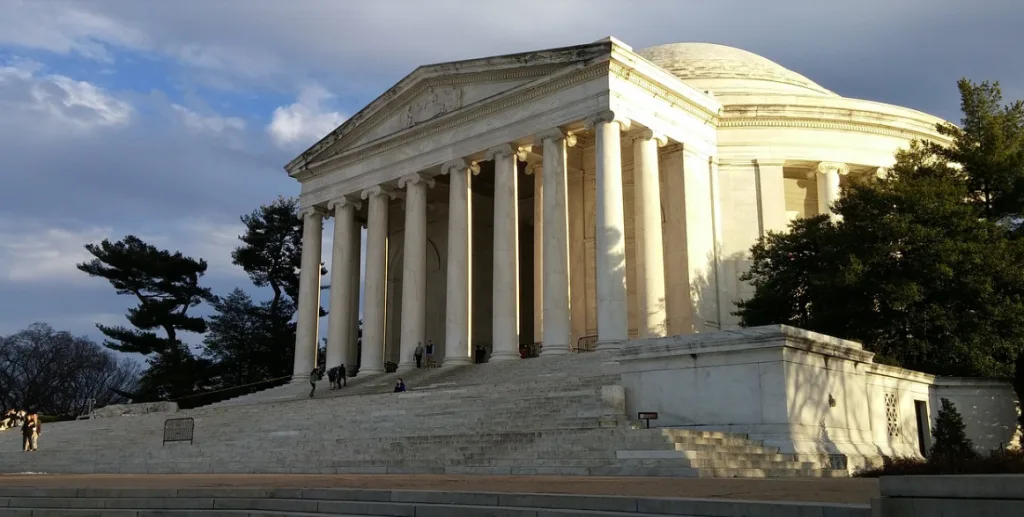One of the most iconic buildings in Washington D.C. is the one dedicated to Thomas Jefferson.
Thomas Jefferson was one of the so-called “Founding Fathers,” a group of American leaders who strived to create an independent state based on republican principles.
He was also the founder of the “Democratic-Republican” party. This party would later splinter into the “Whig Party” and the Democratic party we know today.
It was the former United States President Franklin D. Roosevelt who sponsored and commissioned the building of the presidential memorial and construction started in 1939. By 1943 the structure was completed.
1. Location of the Jefferson Memorial
The Jefferson Memorial is located in “West Potomac Park.” In the park, a lot of historical monuments can be found such as:
- The Korean War Veterans Memorial
- The Lincoln Memorial
- The Washington Monument
- The Franklin Delano Roosevelt Memorial
- The George Mason Memorial
- The Martin Luther King, Jr. National Memorial

It also lies across the National Mall, another park filled with landmarks that borders downtown Washington DC., and the U.S. Capitol.
Here you can see a map with all the monuments and buildings that can be found in both Parks. You can see the Jefferson Memorial is located right at the bottom (number 39) near the Tidal Basin.
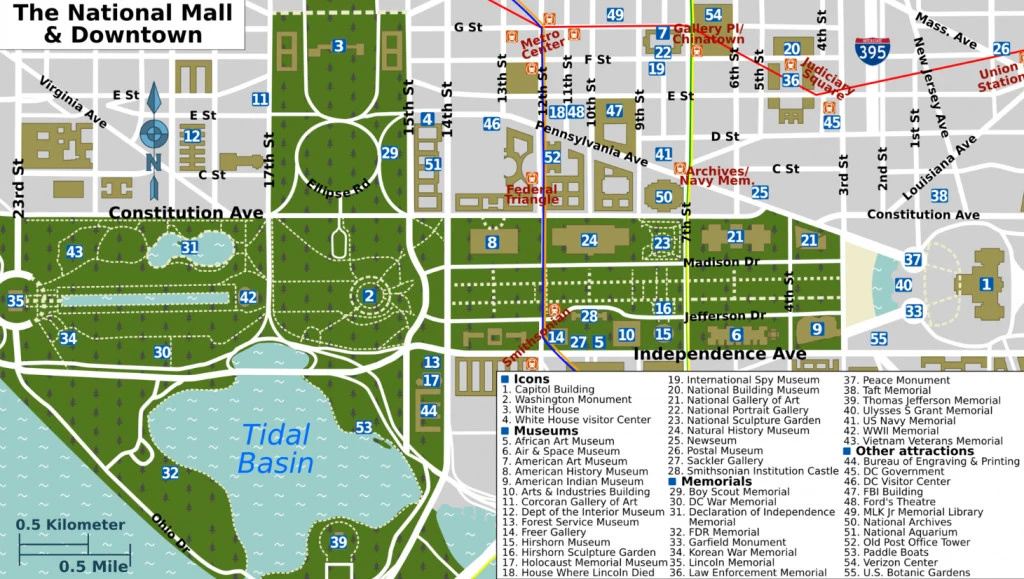
2. The Tidal Basin Beach
Up until the 1880s, the Tidal Basin was one big flooded area. At that time, the idea came about to create a basin to capture high tidewater from the Wahington channel.
The land on which the Jefferson Memorial stands right now is actually man-made. Even more interesting is that it first served as a beach, attracting over 20,000 people one summer day in July 1920.
So why close a popular spot where people can hang out in the summer?
It actually happened in 1925. Congress had approved a plan to fund the integration of a beach for African-Americans nearby. That wasn’t to the liking of some Southern senators.
Result: The Tidal Basin beach got closed for everybody altogether.

3. The initial idea for the Tidal Basin
The McMillan Commission already proposed a building back in 1901. They had visited Europe to get ideas, and a Pantheon-style monument was proposed for the Tidal Basin area.
The building was supposed to (according to the McMillan Commission back in 1902):
Host the statues of the illustrious men of the nation, or whether the memory of some individual shall be honored by a monument of the first rank may be left to the future.
The initial idea for the building in the Tidal Basin area was rejected by congress.

4. Monument for Theodore Roosevelt
The Tidal Basin Beach was closed permanently due to racial issues in 1925. Nothing was planned yet for the Tidal Basin area the moment it was closed.
The idea came about to create a monument for Theodore Roosevelt, the 26th president of the United States.
To achieve this, a contest was held in which architect John Russell Pope submitted the winning proposal.
The half-circle structure located next to a circular basin was never funded.
Interesting fact: Architect John Russell Pope lost another competition to build the Lincoln Memorial. Here you can see one of his proposals submitted in 1912:
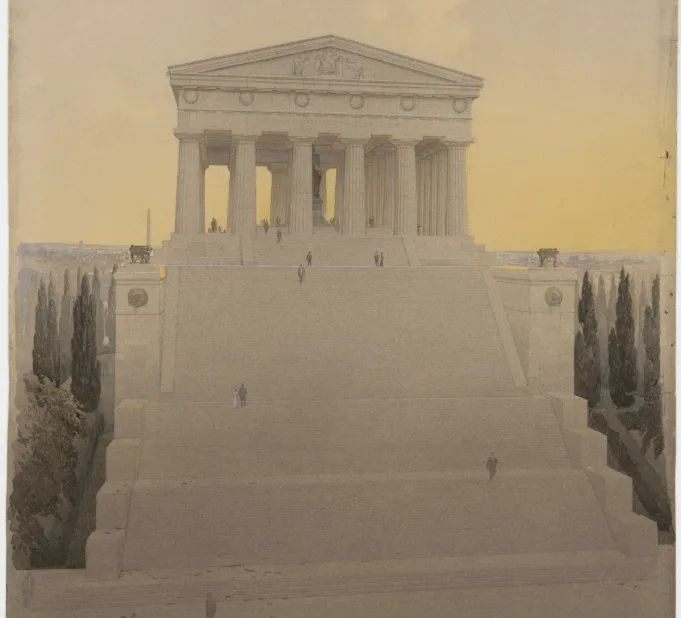
5. The final decision for the Jefferson Memorial
Franklin D; Roosevelt had always been a big admirer of Thomas Jefferson. During the construction of the “Federal Triangle,” a triangular area in Washington DC with 10 major buildings, he personally contacted the Commission of Fine Arts.
He saw the chance of including a monument to Thomas Jefferson in the current construction of the Federal Triangle.
With the help of Congressman John J. Boylan, a commission was created to help facilitate the construction of the Jefferson Memorial.
Interesting fact: $3 million was assigned to the commission, led by chairman Boylan, to create the memorial to Thomas Jefferson.

6. The Jefferson Memorial plan
It was the architect John Russell Pope that was assigned by the commission in 1935 to create the building.
Pope was the architect who previously won the competition held for the Theodore Roosevelt Memorial back in 1925.
Because of his studies at the American Academy in Rome and his travels through Italy and Greece, he became one of the most famous neoclassical architects in the United States.
For the Jefferson memorial, he created a large Pantheon-like structure. The only thing that was to be decided was the location of the Neoclassical building. He proposed 4 options:
- On the Anacostia River at the end of East Capitol Street.
- At Lincoln Park.
- On the south side of the National Mall across from the National Archives (a building he designed as well).
- On the Tidal Basin, directly south of the White House.
The motivation of the commission to build the Jefferson Memorial near the Tidal Bassin was not just because of its prominent position, but also because it completed the original “four-point plan” of the McMillan Commission (the one from 1901).
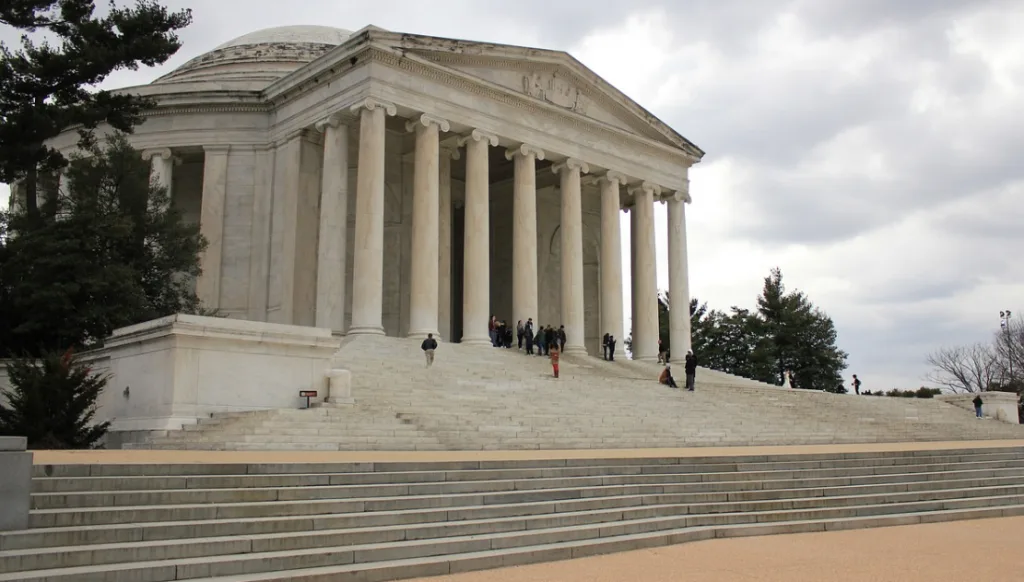
7. Location trouble
Not everybody was too fond of the location the Jefferson memorial would be built at. The reason for this was the existence of about 3000 Yoshino cherry trees at the location.
These trees were donated by the government of Japan back in 1912 and had turned a swamp into a very nice area near the Tidal Basin.
The protest got so big that 50 women threatened to chain themselves to the trees if construction, and therefore the removal of the trees, continued.
Even though construction went on regardless of all the protests, it did help to spare a large number of these beautifully blossoming trees.

8. Jefferson Memorial construction
The construction of the Jefferson Memorial started on December 15, 1938. Almost a year later, Franklin D. Roosevelt laid the cornerstone of the memorial. This happened on November 15, 1939.
Pope had died by now (in 1937) and by the request of the commission of Fine Arts, the original plan was made a bit more humble.
This way it wouldn’t overshadow the Lincoln Memorial, another point of protest amongst people living in Washington DC.
Construction of the Jefferson memorial was finalized nearly 4 years after it started in 1943.
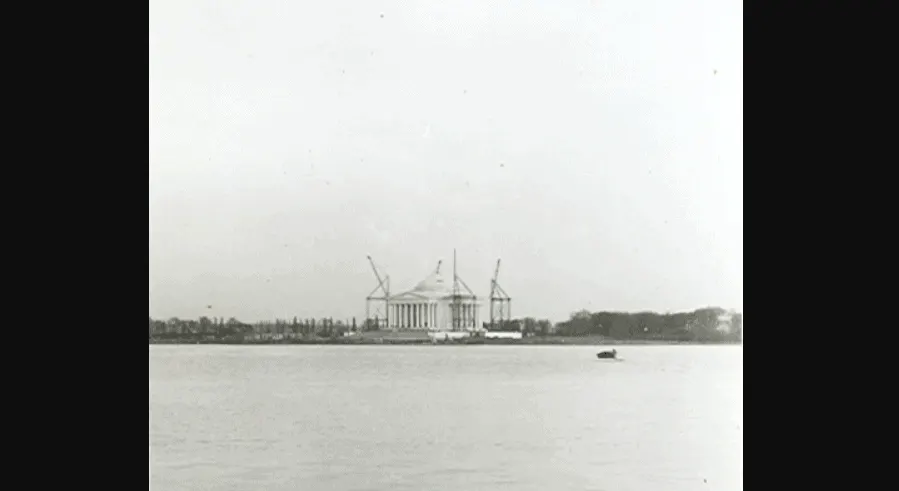
9. The Thomas Jefferson Statue
The final decision to make by the commission was to decide who would create the statue for the Thomas Jefferson memorial.
What better way to find a sculptor than to hold yet another competition?
A total of 101 entries were submitted, 6 finalists were chosen and the winners were eventually Rudulph Evans, who would become the main sculptor, and Adolph A. Weinman, who was chosen to sculpt the pediment relief situated above the entrance.

10. Fake statue during the inauguration
The inauguration of the Jefferson Memorial happened fittingly on the 200th anniversary of Thomas Jefferson’s birthday. This happened on April 13, 1943, and was done by Franklin D. Roosevelt, the American president at the time.
An interesting fact about this event is that the statue of Thomas Jefferson wasn’t finished yet.
The second world war was raging heavily and resources were scarce at the time. This caused a delay for Rudulph Evans, the creator of the statue.
So what happened?
They put a plaster replica of Evans’s statue and painted it to make it appear as a real bronze statue. It looked perfect.
The real statue was installed in 1947 and was cast by the New York-based bronze foundry “Roman Bronze Works.”

Interesting facts about the Jefferson memorial Statue: It stands 19 feet tall (5.8 m) and weighs over 10,000 pounds (4336 kg)!
11. Tourist attraction
The Jefferson Memorial is a historic place that has been listed on the National Register of Historic Places since October 15, 1966.
It’s part of the huge plan created by the McMillan Commission in the early 1900s and is therefore visited by a lot of people every year.
The statistics website Statista estimates that about 3.2 million people actually visited the Jefferson memorial in 2018 alone.
